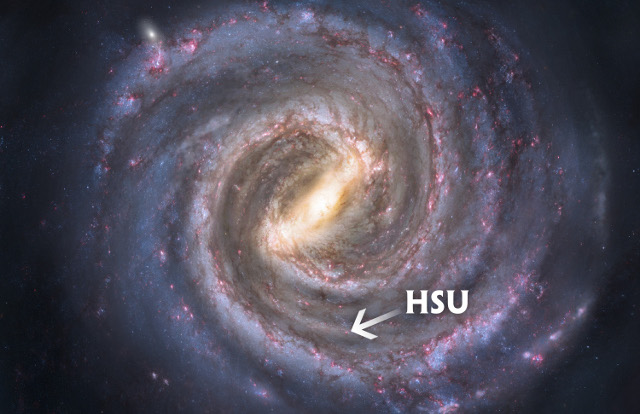
“Stars to Rocks” will launch this year with a summer immersion program and classes in the fall, bringing together Chemistry, Physics, and Geology students for an Area E General Education freshman seminar course being designed and co-taught by Chemistry Professors Claire Till and Joshua Smith, Physics Professor Monty Mola, and Geology Professor Melanie Michalak. Stars to Rocks not only introduces students to the common academics of the three disciplines, but also connects them to campus resources to support them academically, socially, and emotionally, as well as other student mentors, faculty members, clubs, and professionals.
It’s an idea that professors in those departments had been mulling for some time, and it coincides neatly with the University’s Graduation Initiative 2025, which aims to increase retention and graduation rates.
“The Physics major—much like the Geology major—has students come in, and the first thing they do is take a series of math courses,” says Mola, an organizer of the program along with Chemistry Chair Joshua Smith, Geology Chair Mark Hemphill-Haley, and HSI STEM Lead Coordinator Kat Overeem. “So we don’t even get to know our majors, except for briefly through advising, until their sophomore year.”
Stars to Rocks aims to change that, giving new students the keys to early success in their programs. “Research shows that successful students often build cohorts early, with study groups and self-support systems,” Mola says.
Stars to Rocks is modeled after the Klamath Connection—a residential, summer immersion, and academic program that’s been showing success as it heads into its third year.
“We can go under the Klamath Connection umbrella of support,” says Smith. “We didn’t have to reinvent any of those wheels.”
A key difference between the programs is whether potential participants opt-in or opt-out. The Klamath Connection is an opt-in program for Wildlife, Fisheries, Biology, Botany, Zoology, Environmental Science & Management, and Environmental Resources Engineering majors. Chemistry, Physics, and Geology are much smaller programs: there are fewer students in those three majors combined than in Wildlife, which makes up a big segment of the Klamath Connection students. Because of this, the professors were able to design the Stars to Rocks program to be opt-out rather than opt-in. (The living community and summer immersion program are still opt-in.)
Incoming Stars to Rocks students will have freshmen-only Chemistry 109 course taught by Chemistry Professor Matt Hurst—which he and other members of the Chemistry Department recently redesigned to aid student success—as well as connections to the program in their first-year English and math classes.
“We talked with faculty in those departments about ways we can link the curriculum,” says Smith. “We can know what they’re doing in that class more or less and find topics that overlap.” Professor Hurst is also developing a lab that will link the summer immersion program with the Chem 109 class, something he has already done for the Klamath Connection.
Funded by the Hispanic-Serving Institutions (HSI) Science, Technology, Engineering, or Mathematics (STEM) and Articulation Program federal grant, the program supports academics outside of the classroom setting as well. “Having everyone in the same courses allows us to know when those major assignments are coming up and support students,” says Overeem. “We can collaborate with the Library and themed housing to hold study events and support group studying.”
Hemphill-Haley says the program will enhance the entire first-year experience. “We’re going to engage students in such things as how to be away from their families. We want to get them enthusiastic in the first semester. It’s a holistic kind of approach: building yourself as a scientist and being aware of your role as a scientist in a community and in the environment.”